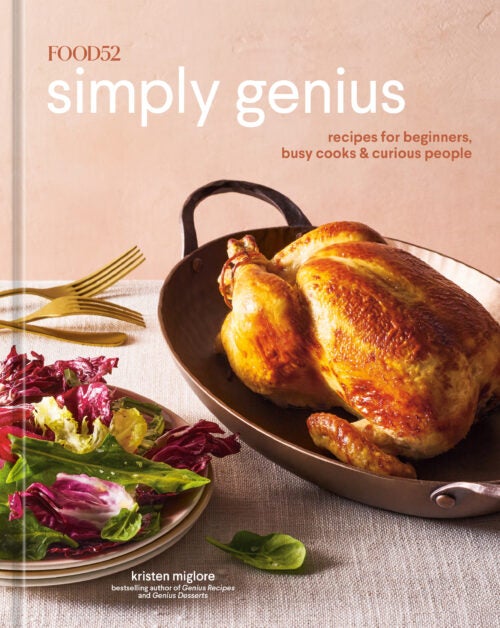











Lasagna is the dinner everyone wants, but no one thinks they have time to make. But in this one- skillet recipe from Kathy Brennan and Caroline Campion’s cookbook, Keepers, you do every step right in the pan, from browning the sausage, to mashing up the canned tomatoes, to poking in the noodles, to simmering it all into a saucy, cheesy mass, all within 45 minutes. (Or skip the sausage and make it vegetarian, throwing in a teaspoon of fennel seeds to mimic the flavor, a tip from Food52 reader Cheryl D.)
This all-access technique also gives you chances to interact and taste as you cook to ensure lasagna success, and just enough time to wash dishes and throw together a side (see page 148). I’ve tried other skillet lasagna recipes, but they’ve ended up more like pasta stews or required just as much work and dirty dishes as their longer-cooked counterparts. This is the one that stuck. It’s a keeper.
6 servings
- Brown the sausage: Set the sausages on a plate, slit each casing open with a paring knife, peel it away from the meat, and discard. In a large high-sided sauté pan or Dutch oven with a 3-quart (2.8L) capacity, heat the oil over high heat until it shimmers. Add the sausages and cook, stirring with a wooden spoon and breaking up the meat, until browned, about 4 minutes. Turn down the heat to medium-low and, leaving as much oil behind in the pan as you can, scoop the sausage into a medium bowl and set aside.
- Make the sauce: Add the onion, garlic, and red pepper flakes to the pan and cook, stirring occasionally, until the onion is softened, about 7 minutes. Add the oregano, the sprig of basil, and the tomatoes and their juices, crushing the tomatoes as you add them with your hands or a potato masher (consider wearing an apron or dark shirt—the tomatoes will squirt).
- Add the cooked sausage and any juices. Season with a pinch of salt and a few grinds of pepper, then gently simmer for 5 minutes, stirring occasionally. (Canned tomatoes can vary—if the sauce is really soupy, let the liquid boil off until it’s thick and saucy; if it looks dry, add a little water.) Taste and adjust the seasoning (it should be a little salty) and pull out the basil sprig.
- Add the noodles: Break half of the lasagna noodles in half crosswise (don’t worry if smaller pieces break off—they’ll go in, too) and, as you do so, push each piece into the sauce under the sausage, distributing them evenly around the pan (it can help to do this off the heat, and to use an extra noodle to nudge them under—try to leave a little cushion of sauce beneath them, so they don’t stick to the bottom and burn).
- Break the rest of the noodles in half and distribute them evenly on top of the sauce, then push down on them with the back of your spoon to submerge them. Cover the pan with a lid or sheet pan and gently simmer, raising the heat a little, if needed, until the noodles are tender and the sauce has thickened slightly, about 12 minutes. (Use oven mitts to lift the lid and peek.)
- Top, melt, and eat: Spoon the mascarpone on top of the lasagna and swirl it into the sauce. Scatter the mozzarella on top, cover, and gently simmer until the cheese is melted, about 2 minutes. Take the pan off the heat and top with the fresh basil leaves, tearing any large ones. Let the lasagna sit, uncovered, for about 10 minutes, then serve.
- Make ahead and store: Lasagna can be made the day before, left to cool slightly before storing tightly sealed in the fridge, and reheated in a 350°F (175°C) oven. Leftovers keep well covered in the fridge for 5 days (or in the freezer for 3 months) and can be microwaved or warmed in the oven.

